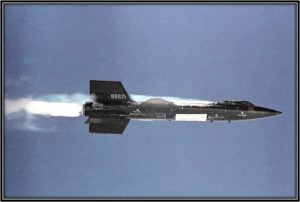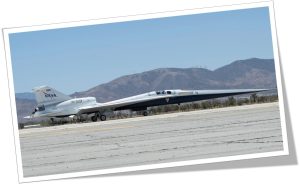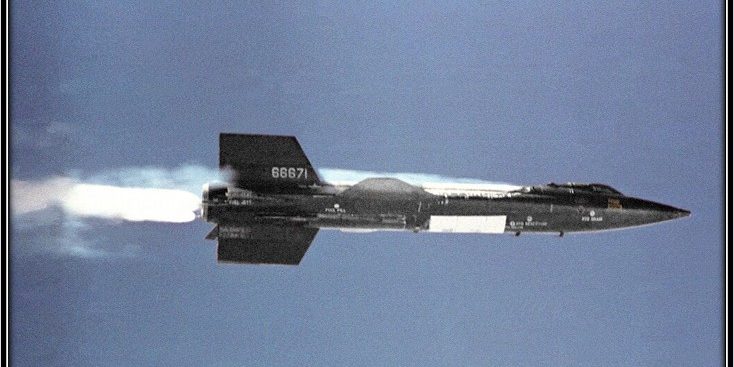A July 2025 “This month in aviation history”: Quiet Supersonic
Contributor: Barry Fetzer
Sources: Space.com and NASA
When I was a kid growing up in the 50’s and 60’s, the North American “X-15” was the “plane du jour” for kids dreaming of becoming pilots…or better yet, astronauts. Pilots of the X-15 earned their astronaut wings because of the aircrafts’ testing into the lower limits of space. According to Wikipedia, “During the X-15 program, 12 pilots flew a combined 199 flights. Of these, eight pilots flew a combined 13 flights which met the Air Force spaceflight criterion by exceeding the altitude of 50 miles, thus qualifying these pilots as being astronauts.”
And appropriately, 66 years since the X-15’s first flight in 1959, we’ve moved up the mathematical aircraft numbering scale from 15 to 59! Here we come X-59! And hopefully, we’ve also encouraged more excited kids to dream of being, and willing to make the sacrifices to become, real-life “Buzz Lightyears”.

X-15 after igniting rocket engine. Courtesy NASA/Public Domain.
NASA’s X-59 ‘quiet’ supersonic jet rolls out for its 1st test drive
By Brett Tingley published July 21, 2025
The aircraft is undergoing its final round of tests before it finally takes to the sky for the first time.
The X-59 was designed from the ground up to fly faster than the speed of sound without generating the thunderous sonic booms typically associated with supersonic flight. The 99-foot (30-meter) aircraft features a radical elongated design, which eliminates a front windscreen; pilots instead see what’s ahead through an augmented reality-enabled closed circuit camera system that NASA calls the External Vision System, or XVS.
This month, NASA took the experimental aircraft out for a drive, performing what are known as taxi tests. During these tests, NASA test pilot Nils Larson drove the X-59 across a runway at low speeds so crews could ensure the jet’s steering and braking systems work as intended. Next, NASA and Lockheed Martin will perform high-speed taxi tests in which the X-59 will accelerate to close to the speed at which it will take off.

NASA’s X-59 quiet supersonic aircraft taxis across a runway during a low-speed taxi test at U.S. Air Force’s Plant 42 test and manufacturing facility in Palmdale, California, on July 10, 2025. (Image credit: NASA/Carla Thomas)
The taxi tests took place at the U.S. Air Force’s Plant 42 facility in Palmdale, California. The Air Force and its contractors use the plant to manufacture and test classified aircraft; the X-59 is being developed by Lockheed Martin, whose legendary “Skunk Works” facility is found at Plant 42.
Some of the U.S. military’s most advanced aircraft were developed to some extent at Plant 42, including the F-22 Raptor, the B-2 Spirit, and the uncrewed RQ-170 Sentinel spy drone.
NASA’s recently-retired SOFIA airborne observatory aircraft, the “flying telescope,” also called Plant 42 home. The agency’s space shuttles, the world’s first reusable spacecraft, were also assembled and tested at the facility.

NASA’s X-59 quiet supersonic research aircraft moves under its own power for the first time at Lockheed Martin’s Skunk Works facility in Palmdale, California, on July 10, 2025. (Image credit: NASA/Carla Thomas)
These taxi tests are only the most recent tests that have taken place over the last several months. Earlier this month, NASA teamed up with the Japan Aerospace Exploration Agency (JAXA) to test a scale model of the X-59 in a supersonic wind tunnel in order to measure the noise produced beneath the aircraft.
Onward and upward!
Sources: Space.com and NASA







